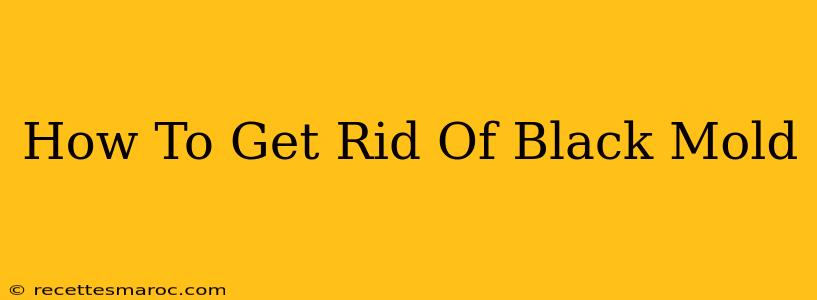Black mold. Just the words themselves conjure up images of damp basements and health concerns. It's a serious issue, and knowing how to effectively and safely remove it is crucial for the health and well-being of your family and your home. This comprehensive guide will walk you through the process, from identification to remediation.
Identifying Black Mold
Before you even think about removal, you need to be sure you're actually dealing with black mold ( Stachybotrys chartarum). Many fungi appear dark in color, but only Stachybotrys chartarum is considered truly "black mold," and it's often associated with significant water damage. Don't attempt to identify mold yourself definitively. If you suspect mold growth, especially if it's extensive or you're experiencing health issues, contact a qualified mold remediation specialist.
However, some visual indicators can raise suspicion:
- Dark, slimy patches: Black mold often appears as dark greenish-black, slimy patches.
- Musty odor: A strong, musty odor is often a telltale sign of mold growth.
- Water damage: Mold thrives in damp environments, so the presence of water damage (e.g., leaky pipes, roof leaks) significantly increases the likelihood of mold growth.
What to Do If You Suspect Black Mold
If you suspect black mold, avoid direct contact. Wear protective gear such as an N95 respirator mask and gloves. Do not disturb the mold, as this can release spores into the air. Again, contact a professional for proper identification and remediation.
Safe Mold Removal: When You Can DIY (Small Areas Only)
For very small, isolated patches of mold (less than 10 square feet), you might consider DIY removal. However, always prioritize safety:
- Protective Gear is Crucial: Wear N95 respirator, gloves, and eye protection. Old clothes you don't mind discarding are also recommended.
- Ventilation: Open windows and doors to maximize ventilation. Use fans to help circulate air, pulling it out of the affected area.
- Cleaning Solution: Mix a solution of one cup of bleach with one gallon of water (always add bleach to water, never the other way around). This is effective for killing many types of mold but not all.
- Scrubbing: Gently scrub the affected area with the bleach solution using a stiff brush. Do not use a pressure washer as it may spread the spores.
- Dry Completely: Allow the area to dry completely. This is vital to prevent future mold growth. Use fans and dehumidifiers to aid the drying process.
- Disposal: Dispose of cleaning materials and any contaminated materials properly according to local regulations.
When to Call a Professional Mold Remediation Specialist
In most cases, especially when dealing with larger areas of mold or suspected Stachybotrys chartarum, it's essential to call a professional. Professionals have the expertise, equipment, and safety protocols to handle mold remediation correctly and prevent further problems.
Reasons to call a professional include:
- Large areas of mold: More than 10 square feet.
- Mold behind walls or under flooring: Mold that is inaccessible without specialized tools.
- Health concerns: If anyone in your household is experiencing health problems potentially linked to mold exposure.
- Recurring mold problems: If mold keeps returning despite your efforts.
- Uncertainty about the type of mold: Professional testing can definitively identify the mold species.
Preventing Future Mold Growth
Prevention is key. Here are some proactive measures to take:
- Fix Leaks Promptly: Address any leaks in your plumbing or roof immediately.
- Improve Ventilation: Ensure proper ventilation in bathrooms and other areas prone to moisture. Use exhaust fans.
- Reduce Humidity: Use dehumidifiers in damp areas to reduce humidity levels.
- Regular Cleaning: Regularly clean and disinfect areas prone to mold growth.
- Properly Maintain HVAC Systems: Regularly maintain your HVAC systems to prevent moisture buildup.

